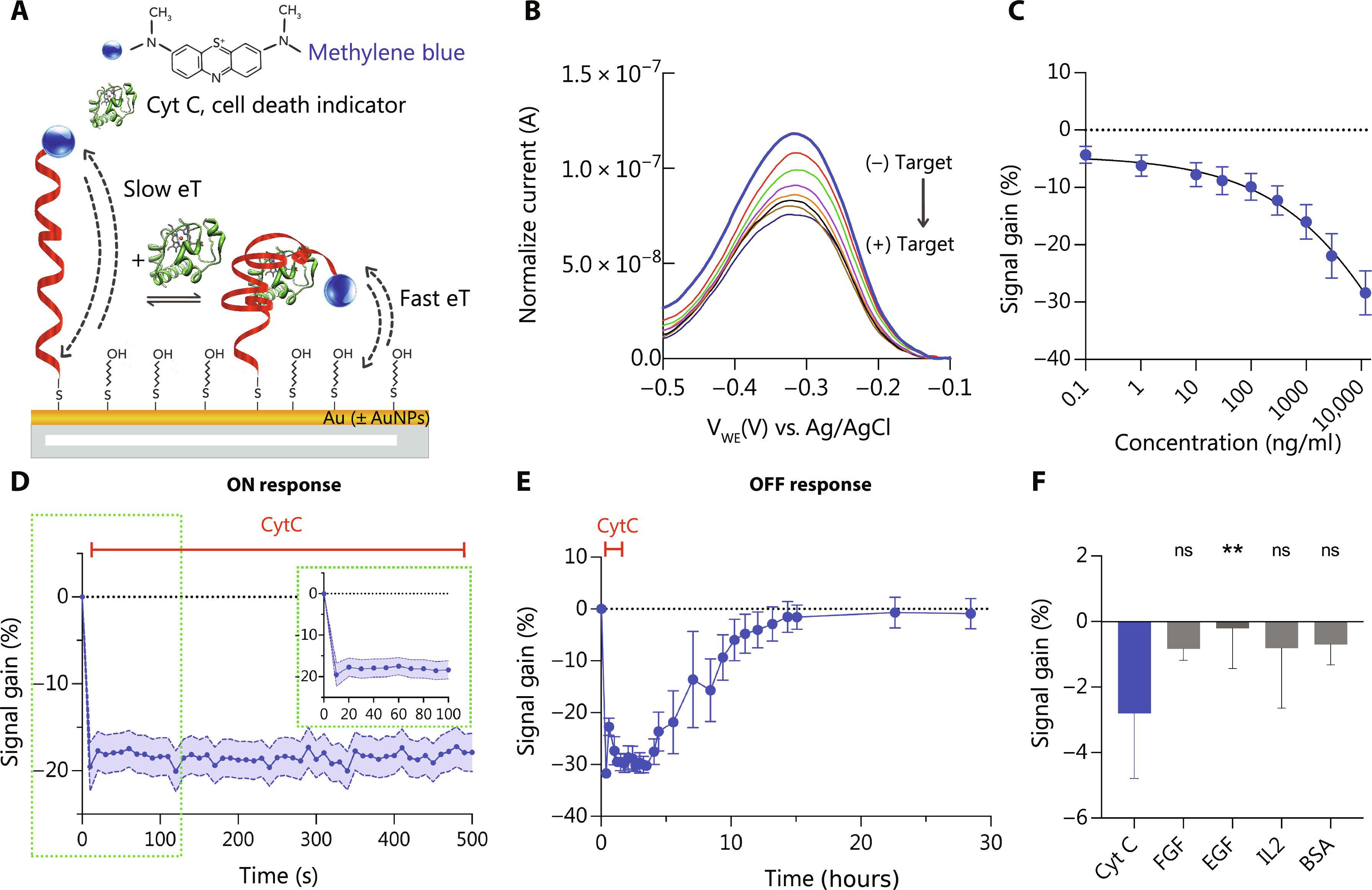利用多孔式传感器平台对微观解剖肿瘤活检组织中的细胞色素 C 药物反应进行无标记实时监测。
IF 11.7
1区 综合性期刊
Q1 MULTIDISCIPLINARY SCIENCES
引用次数: 0
摘要
对完整肿瘤活检组织进行功能测定,可以捕捉组织结构、肿瘤异质性和肿瘤微环境等关键治疗反应决定因素,从而补充基于基因组学的精准肿瘤学、药物测试和芯片上器官癌症疾病模型方法。这些检测方法大多依赖荧光标记,这种半定量方法最适合单时间点检测或劳动密集型免疫染色分析。在此,我们报告了用于芯片上实时监测细胞色素 C(一种细胞死亡指示剂)的集成适配体电化学传感器,该传感器来自完整的显微解剖组织,具有高亲和力和特异性。该平台采用多孔传感器布局和多路复用电子装置。该灵敏传感器可测量小鼠或人类显微解剖肿瘤暴露于各种药物治疗后上清液中细胞色素 C 的增加量。由于传感器的高亲和力,它主要跟踪细胞色素C浓度的上升,捕捉细胞凋亡过程中的动态变化。这种方法有助于开发更先进的癌症疾病模型,并适用于其他复杂的体外疾病模型,如片上器官和有机体。本文章由计算机程序翻译,如有差异,请以英文原文为准。

Label-free, real-time monitoring of cytochrome C drug responses in microdissected tumor biopsies with a multi-well aptasensor platform
Functional assays on intact tumor biopsies can complement genomics-based approaches for precision oncology, drug testing, and organs-on-chips cancer disease models by capturing key therapeutic response determinants, such as tissue architecture, tumor heterogeneity, and the tumor microenvironment. Most of these assays rely on fluorescent labeling, a semiquantitative method best suited for single-time-point assays or labor-intensive immunostaining analysis. Here, we report integrated aptamer electrochemical sensors for on-chip, real-time monitoring of cytochrome C, a cell death indicator, from intact microdissected tissues with high affinity and specificity. The platform features a multi-well sensor layout and a multiplexed electronic setup. The aptasensors measure increases in cytochrome C in the supernatant of mouse or human microdissected tumors after exposure to various drug treatments. Because of the sensor’s high affinity, it primarily tracks rising concentrations of cytochrome C, capturing dynamic changes during apoptosis. This approach could help develop more advanced cancer disease models and apply to other complex in vitro disease models, such as organs-on-chips and organoids.
求助全文
通过发布文献求助,成功后即可免费获取论文全文。
去求助
来源期刊

Science Advances
综合性期刊-综合性期刊
CiteScore
21.40
自引率
1.50%
发文量
1937
审稿时长
29 weeks
期刊介绍:
Science Advances, an open-access journal by AAAS, publishes impactful research in diverse scientific areas. It aims for fair, fast, and expert peer review, providing freely accessible research to readers. Led by distinguished scientists, the journal supports AAAS's mission by extending Science magazine's capacity to identify and promote significant advances. Evolving digital publishing technologies play a crucial role in advancing AAAS's global mission for science communication and benefitting humankind.
 求助内容:
求助内容: 应助结果提醒方式:
应助结果提醒方式:


